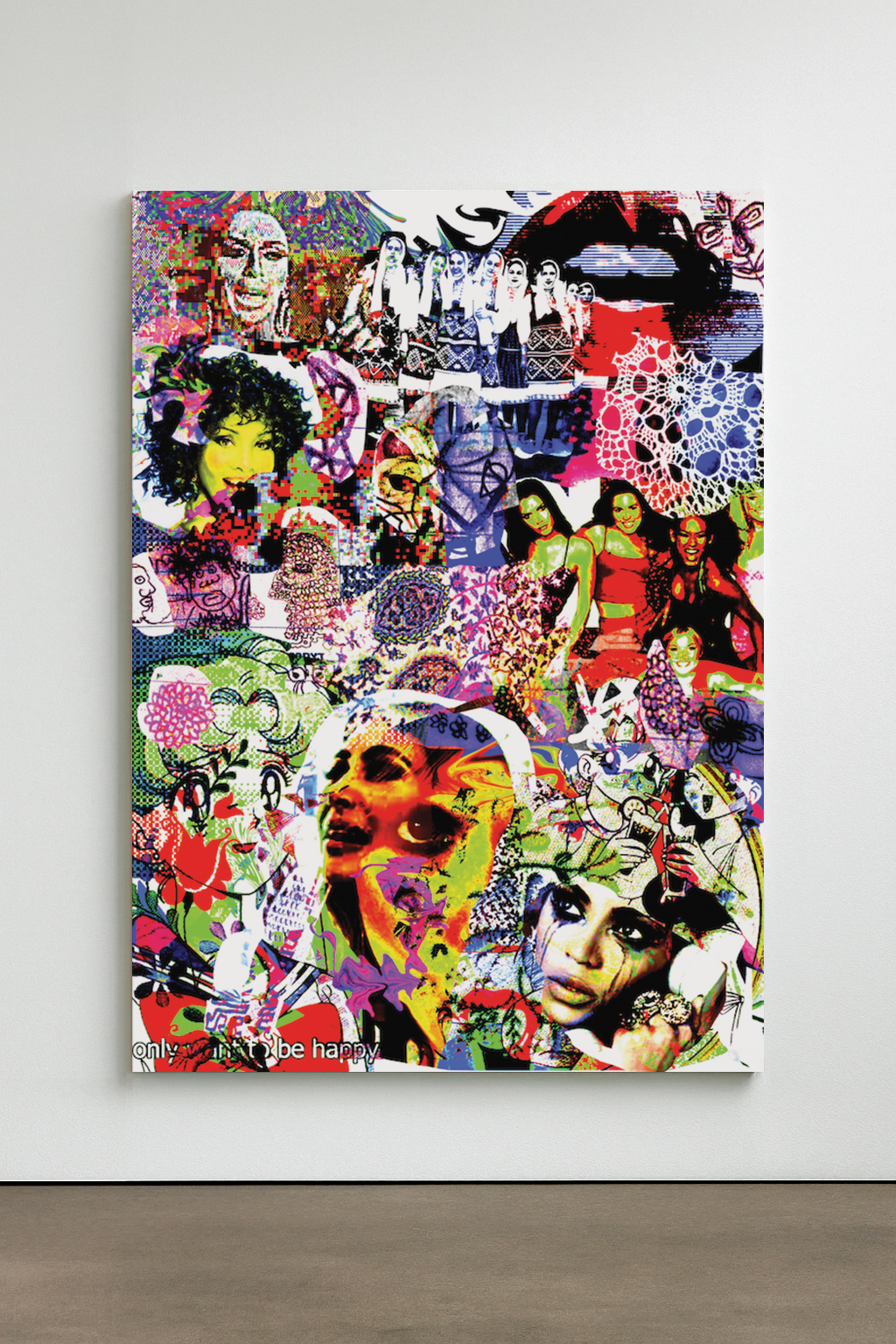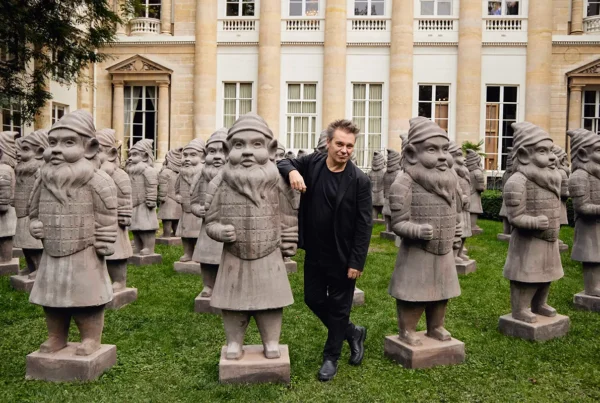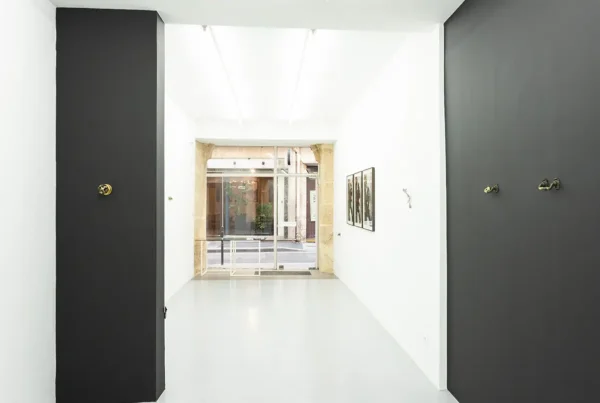“I didn’t choose art – art chose me”
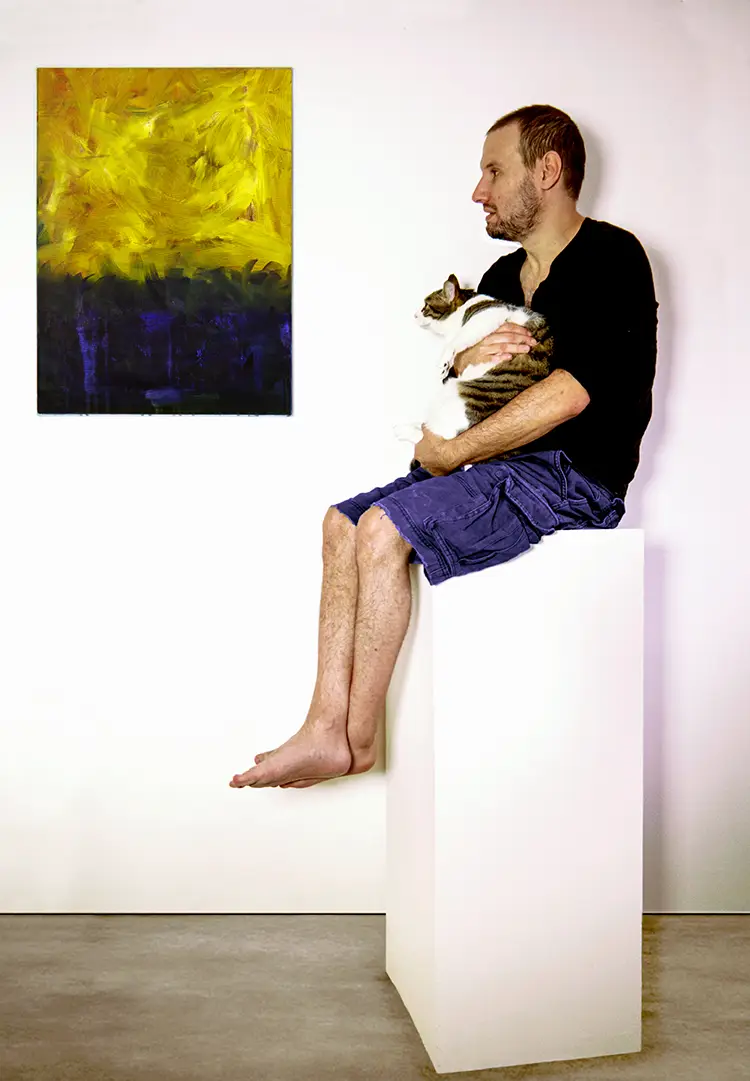
Shahar Tuchner with his cat, looking at “Horizon Interrupted”
Expanding Beyond Borders: A Mediterranean Identity Without Borders
Shahar Tuchner is a multidisciplinary conceptual artist whose work bridges abstract painting, video, sculpture, and installation, rooted in the emotional and cultural strata of the Mediterranean. Born in 1987 and shaped by a cultural expanse rather than a single nation-state, he defines himself not by borders but by the rich cultural spectrum of the Mediterranean basin. His identity is steeped in layered intersections—historical, social, and aesthetic—and he harnesses this multiplicity in every dimension of his work. Trained in the open program at the “Hamidrasha” School of Art at Beit Berl College, Tuchner chose early on to bypass traditional routes and labels. An atheist with a critical eye toward contemporary life, he has developed a body of work that investigates the saturation of modern life and the collisions between culture, media, and personal truth.
“An artist is not just someone who creates, but someone who dares to break conventions and paint the world in new colors.”
In his artistic practice, Tuchner engages with the overwhelming flood of stimuli that characterizes modern existence. From television and cinema to the pixelated chaos of web culture and the tactile presence of nature, he gathers influences like an antenna tuned to every frequency. His works often juxtapose control with spontaneity, precision with impulse—generating dialogues between form and fluidity. This tension surfaces especially in his video art, where he examines how digital and cultural technologies warp, filter, and reframe our understanding of reality. Rather than impose a static message, he invites audiences into a polyphonic experience where sound, image, and space coalesce into something unresolvable yet deeply affecting.
These dualities—intention versus intuition, chaos versus order—are not theoretical for Tuchner; they are lived conditions. Each piece emerges from a process where conceptual structure coexists with emotional momentum. His works become open-ended fields of exploration, spaces in which multiple narratives, symbols, and cultural references overlap. In these pieces, tradition wrestles with innovation, and modernity reflects its own distortions. Whether working with the tactile heaviness of sculpture or the ephemeral pulse of digital media, he crafts a multi-sensory landscape that provokes introspection without dictating interpretation. The viewer is not a passive observer but an engaged participant in this dynamic exchange.
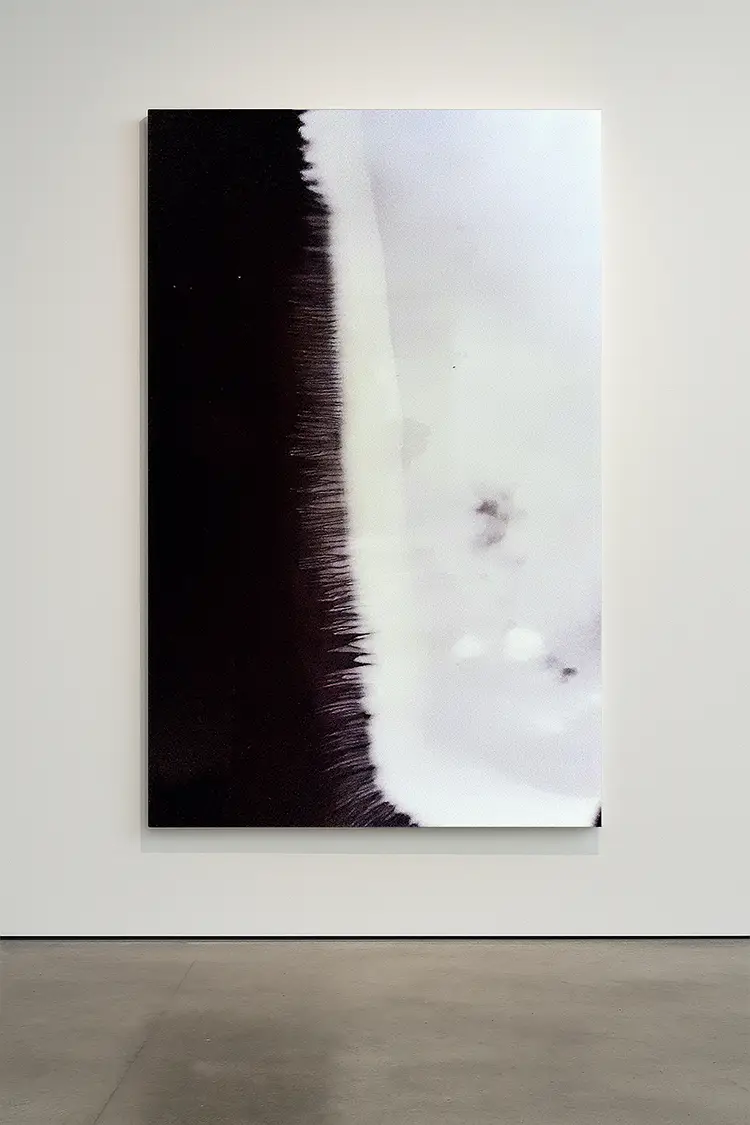
Whisper Divide – painting
Shahar Tuchner: The Origins of an Inner Universe
Tuchner’s creative life began not with formal education, but in the living room of his childhood home, where newspapers served as canvases and television shows sparked his imagination. He recalls drawing his first car at age three and proclaiming, “I will be a painter,” despite not yet knowing the word “artist.” From then on, creativity wasn’t an option—it was his native language. The house slowly transformed into a studio overflowing with paper, clay, and paint, much to the dismay of his father, but always nurtured by his mother’s unwavering support.
Tuchner speaks candidly about the pain inflicted by his father, and the deep emotional and spiritual violation he and his mother endured. That pain forged him as much as the love he received. His mother, he says, is his hero—his protector, his enduring source of belief. “Precise art can be impressive, but only the heart makes it come alive.”
His early experiences combined physical interaction with art and emotional absorption of aesthetics. Visits with his grandmother Miriam to a contemporary art museum left lasting impressions, especially the tactile engagement with outdoor sculptures. These encounters etched themselves into his memory, forming a bond between space, form, and emotional presence. Just as formative were everyday rituals with his mother, who would marvel at buildings and plants with reverence. This attentiveness to the visual and natural world—delivered with maternal wonder—trained Tuchner to see beauty in the mundane and significance in fleeting moments.
The household itself played a crucial role in shaping his artistic DNA. His parents owned a vibrant toy and gift shop, where shelves brimmed with colors, patterns, objects, and stories waiting to be told. The store was more than a commercial space; it was a dynamic environment teeming with social interaction and visual input. From it, Tuchner absorbed not only materials for artistic experimentation but also an early sense of narrative diversity and human behavior. The intersections of customer stories, visual chaos, and shifting packaging trends became fertile ground for the visual and thematic languages that would define his work.
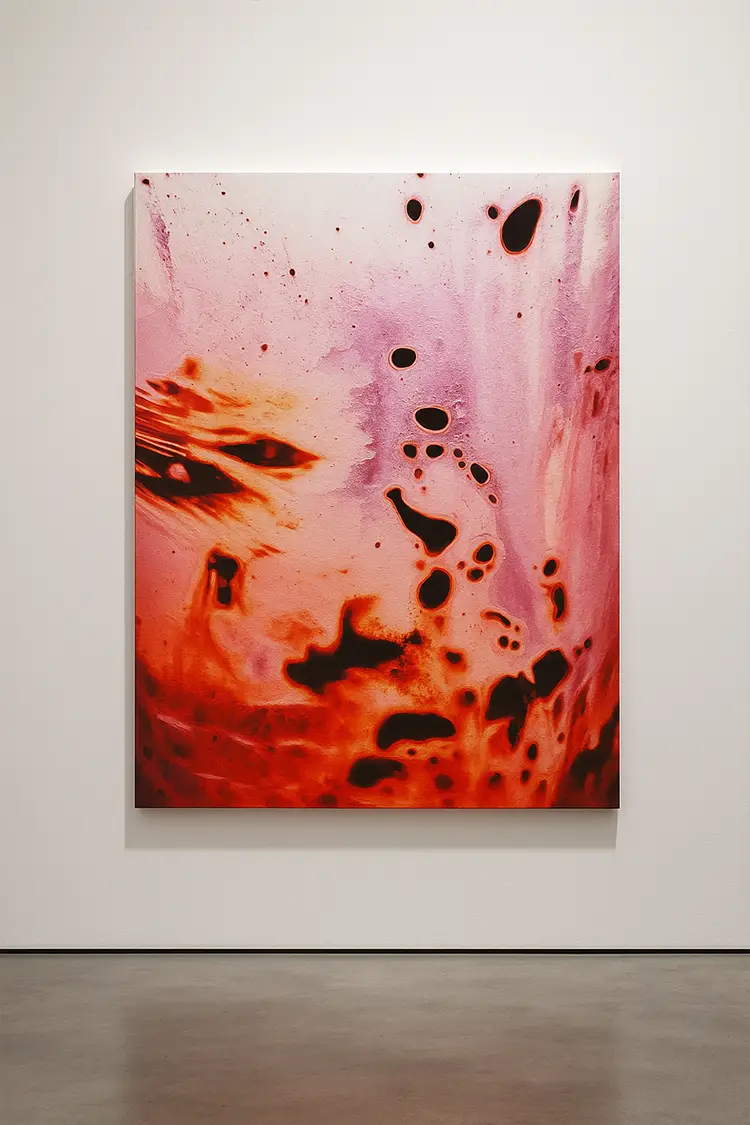
Silent Fire – painting
Abstract Depths: From Personal Crisis to Emotional Expression
A turning point in Tuchner’s life—and by extension, his art—was the painful dissolution of his parents’ marriage. The upheaval was not merely emotional; it was structural, destabilizing his sense of home and security. The divorce was accompanied by financial hardship, legal battles, and invasive experiences that he describes as psychologically violent. “There were days we lived off oats and apples,” he recalls. “At times, I felt our souls had been violated. It wasn’t just a legal battle — it was a spiritual invasion of our home, our breath, our being.”
During this harrowing period, Tuchner stood by his mother, both physically and emotionally, becoming a caregiver and protector. This closeness led him to contemplate taking her surname, Leslau, as a symbolic act of loyalty and reinvention. These intimate, destabilizing events initiated a seismic shift in his creative direction—from outward-looking conceptual critiques to introspective, emotionally charged abstraction.
This transformation brought about what he identifies as two phases in his artistic journey: the “spiral” and the “star.” The spiral represents expansiveness, exploration, and the multiplicity of external influences—multiculturalism, consumerism, and societal norms. The star, by contrast, symbolizes a distilled focus, a dive into the emotional and intuitive core of his being. His current work often reflects this latter phase: expressive brushwork, abstract sculptures, and emotional intensity that forgoes narrative clarity in favor of sensory impact. These pieces don’t explain—they resonate. “True art is not measured by time or place, but in its ability to live in the consciousness of those who experience it.”
Even amid this inward turn, Tuchner hasn’t abandoned conceptual rigor. Instead, he integrates it into a new language, one that balances intellectual structure with emotive immediacy. The once outward-facing social commentary now merges with an internal voyage. Materials, colors, and textures become conduits for feeling, not just form. The brushstroke becomes a sentence. The curve of a sculpture becomes a memory. The layering of paint mirrors the emotional strata of grief, strength, and rebirth. His art has become less about resolving contradictions and more about embodying them—living in the tension between vulnerability and power, pain and transcendence.
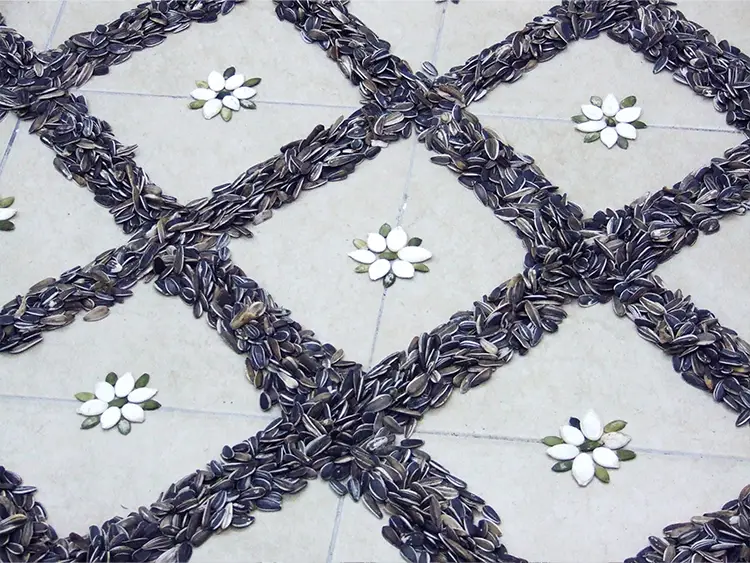
Seeded Floor – installation
Shahar Tuchner: The Artist Who Danced With Doubt
One of Tuchner’s most defining works is his video piece “Folk Dance”, a creation that marked his transformation from video art skeptic to pioneer. Initially dismissive of the medium, he only embraced it as a defiant response to an academic assignment. But instead of mimicking what he had previously found uninspiring, he sought to reinvent the form. The result was a vivid, ironic, and hauntingly beautiful depiction of cultural preservation—where dancers performed traditional movements synchronized to the upbeat anthem “I Will Survive.” Western pop culture, represented by the song, both supports and contrasts with the folk visuals, creating a layered commentary on globalization and cultural resilience.
Folk Dance became a revelation—not only to viewers but to Tuchner himself. The overwhelmingly positive reception shattered his preconceptions about the limits of video art and opened a new channel for self-expression. From that moment on, he began to explore video as a central component of his multidisciplinary practice. The work became a template for how traditional narratives could be reinterpreted through modern lenses, giving space to irony, critique, and empathy simultaneously. Awards and international exhibitions soon followed, and video art became a medium through which he could merge his conceptual, emotional, and visual instincts into unified experiences.
Beyond Folk Dance, other significant works also punctuate his journey—some still kept private, such as his monumental triptych Collaged Reality or a five-year video piece composed frame by frame. Installations like “Kiss Me Popcorn!” and “Seeded Floor” reflect his penchant for blending the tangible with the symbolic.
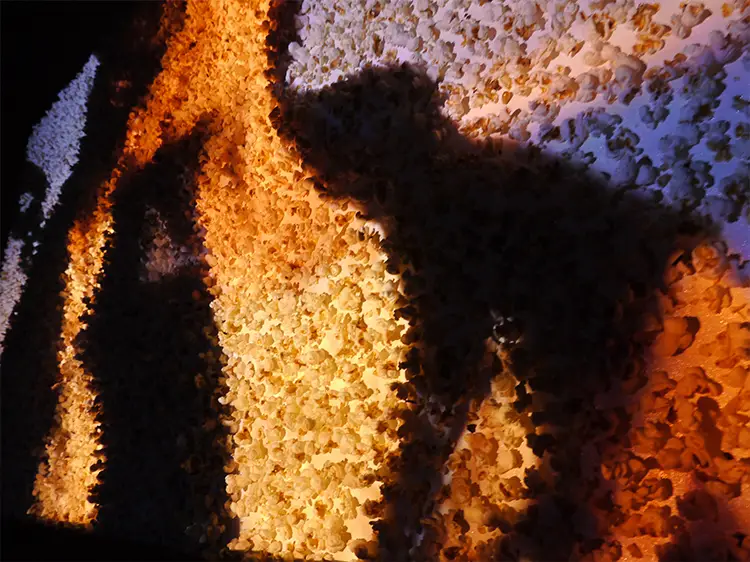
Kiss Me Popcorn – video-art installation
From the Jeu de Paume to Joan Mitchell: A Parisian Epiphany
Another pivotal moment unfolded in Paris—one that profoundly altered Tuchner’s sense of artistic purpose. Earlier that day, he had a meeting with the curator of La Galerie Nationale du Jeu de Paume, one of the city’s leading contemporary art institutions. The meeting, set across from the Tuileries Garden and just steps from the Musée de l’Orangerie, marked a career milestone and filled him with reflective anticipation.
After the meeting, he crossed into the Orangerie with only thirty minutes before closing. He rushed past the galleries with the intention of glimpsing as much as possible, but the moment he entered the rotunda of Claude Monet’s iconic Water Lilies, time stopped. “I was mesmerized,” he remembers. “It drew me in like a magnet, and I couldn’t move on. I had to pull myself away.”
Racing to see more before the museum closed, he was soon stopped by security. But just before being turned away, his gaze landed across a stairway—on something electrifying. A painting by Joan Mitchell, “The Goodbye Door”. He had no idea what it was called at the time, only that it shook him to his core. “I didn’t just see a painting. I felt it land inside me — like a punch I didn’t expect. That’s when I knew: this is what art must do.”
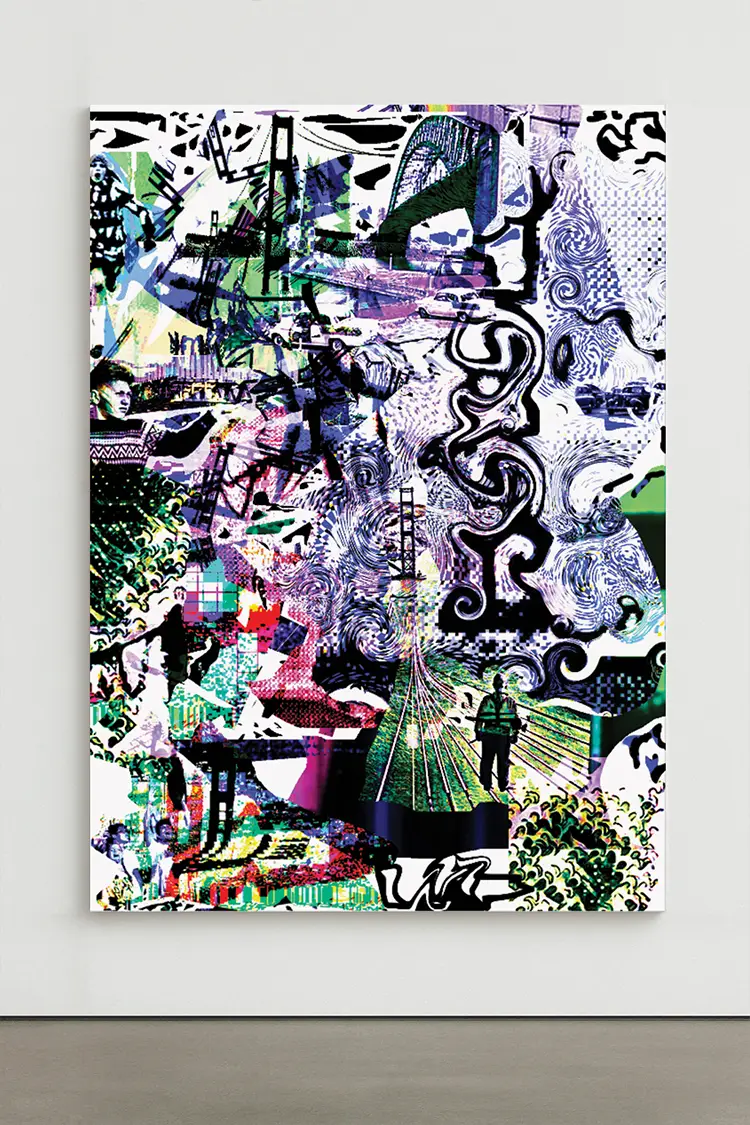
Bridge Watcher – painting
Resonance and Intuition
Tuchner’s philosophy is simple but radical: art must resonate. It must echo long after the eye has turned away. He doesn’t aim to deliver a message, but to stir something dormant in the viewer. He listens — to materials, to silence, to vibration — and works not with the goal of resolution, but revelation.
“Knowledge is limited, but it is the infinite imagination that creates the limits of the impossible.”
For Tuchner, imagination is not a flight from reality, but a way of expanding its boundaries. In that space between silence and form, logic and intuition, his works are born.
“He who is afraid, dies twice,” he says. “Once — you die of fear, and a second time — because everyone dies in the end.”
